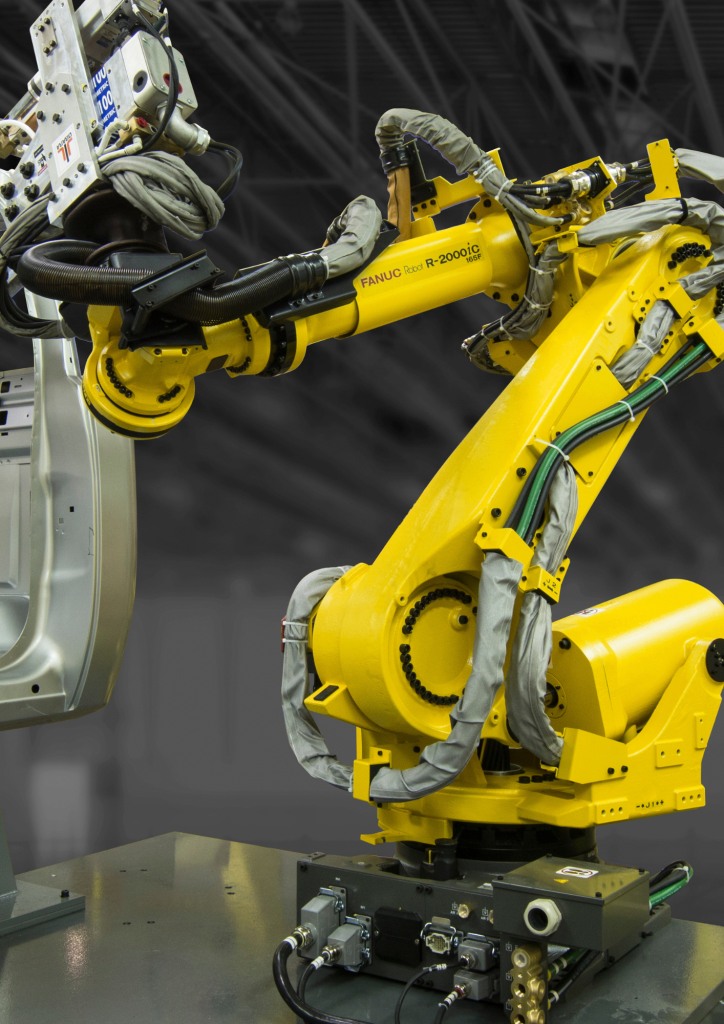In the heart of manufacturing today, robotic arms are changing the rules of production, mixing accuracy, safety and efficiency in ways that were previously impossible to imagine. These marvels of the mechanical realm – sometimes known as robot arms have become indispensable to businesses all over the world due to the urgent need to cut costs without sacrificing quality. By integrating robotic arms into production lines, manufacturers have not only reduced costs but also transforming workplace safety and efficiency. Learn how these cutting-edge robots have transformed the landscape of industrial production.
The primary force behind the increase in global robotic arm use is the efficiency of costs. Factory owners are constantly under pressure to minimize workplace injuries, minimize manufacturing errors, and decrease waste. Robotic arms tackle these challenges head-on. Robots are more precise than human laborers when it comes to completing repetitive tasks, reducing costs and avoiding costly errors. Robotic arms are used in many industries that require large quantities of material such as the automotive industry, to ensure perfect assembly. This can lead to substantial savings, as fewer defective parts means less rework and waste.

Image credit: automatedsolutions.com.au
The security of robotic arms is an important aspect. A lot of manufacturing processes, such as working with hazardous materials or employing heavy machinery can be dangerous to human workers. By utilizing robot arms companies can eliminate workers from hazardous environments. This minimizes the possibility of injuries at work. A robotic arm, designed as a kinematic chain of movable joints, mimics the functionality of a human arm but operates without the risk of physical harm. The machines come with robotic hands, or end-effectors that can be programmed. They can be used for tasks such as grasping, spinning and welding in conditions that make it dangerous for humans.
The versatility of robotic arms can be a game changer in different industries. Robot arms are adaptable to many different tasks. From automotive assembly to electronics production. They can handle complex operations with unparalleled precision, such as painting and tending of machines. In warehousing, robotic arms have changed palletizing by automating the process of loading goods onto pallets with accuracy and speed. The automation increases productivity and security because robot arms are able to work constantly without fatigue.
One of the most exciting advancements in this field is the rising popularity of collaborative robots also known as cobots, that collaborate with human employees. Cobots that have robotic arms, unlike traditional industrial robots that are kept in isolated cells, are specifically designed to interact with humans safely and smoothly. In a factory environment cobots’ robotic arms can be used to perform heavy lifting or repetitive tasks, allowing humans to concentrate on more difficult tasks. This type of collaboration boosts productivity and ensures a safe work area, since cobots are trained to stop or change their actions if a person is within the vicinity.
The significance of robotic arms goes beyond safety and efficiency, to the very structure of modern manufacturing. Their capability to do tasks such as welding or assembly, as well as material handling with high accuracy is what makes them essential in high-risk industries. For instance, in manufacturing of automobiles, a robot arm is able to rotate and move parts while assembling, ensuring the perfect alignment of parts without human intervention. Robot arms are also used in electronics to take care of delicate components. This minimizes the risk of damage and increases output quality.
As industries continue their evolution the role of robotic arms will increase. As they can reduce costs, increase safety, and adapt for different tasks robots are the foundations of future manufacturing. Robot arms, which combine the latest technologies and human creativity is not just a tool, but partners in progress. They drive technological innovation and alter the way in which the world is built.

